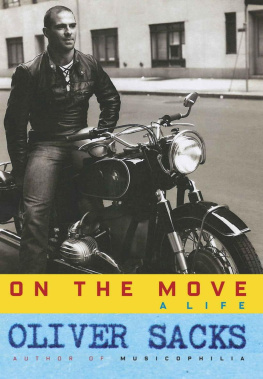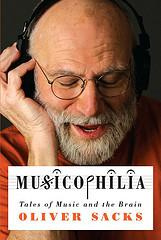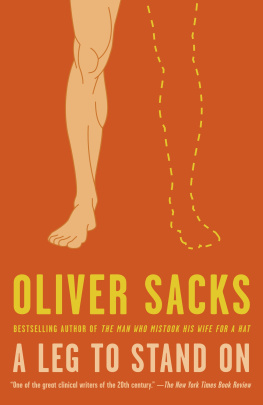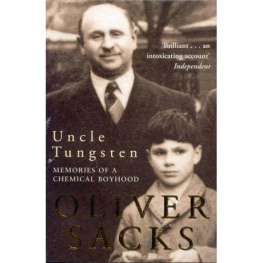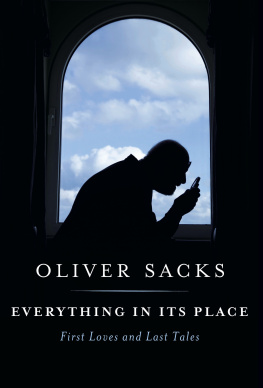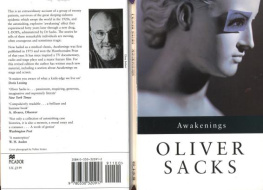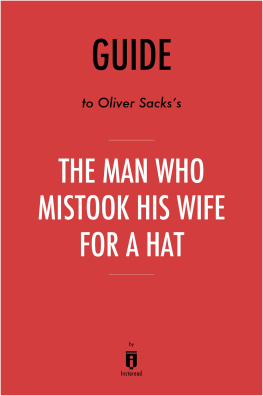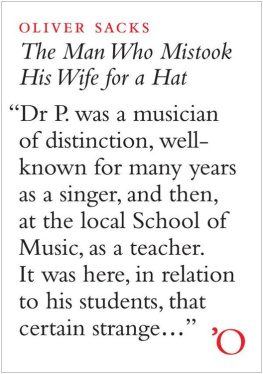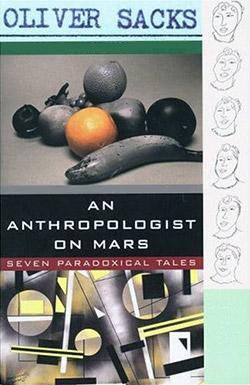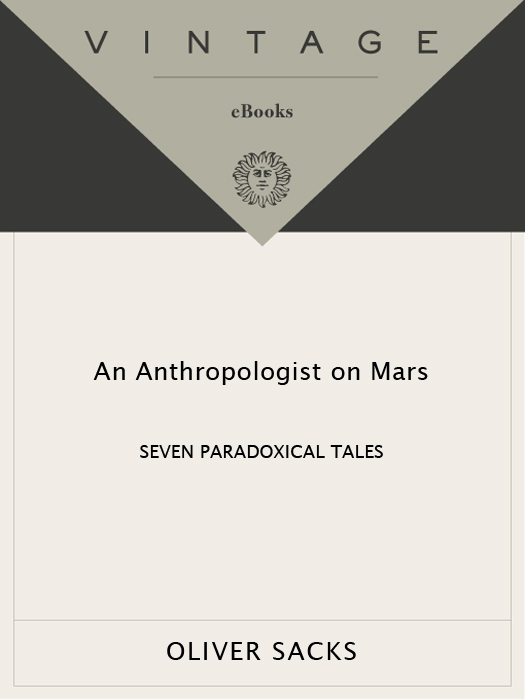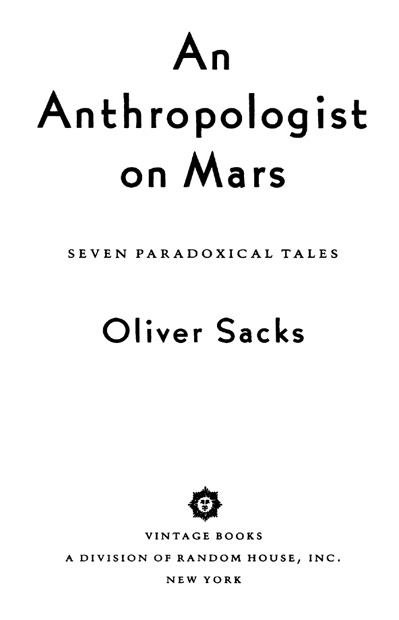Oliver Sacks
An Anthropologist on Mars
Oliver Sacks is a practicing physician and the author of ten other books, including Musicophilia, The Man Who Mistook His Wife for a Hat, and Awakenings (which inspired the Oscar-nominated film). He lives in New York City, where he is a professor of neurology and psychiatry at Columbia University Medical Center and the first Columbia University Artist.
www.oliversacks.com
FIRST VINTAGE BOOKS EDITION, FEBRUARY 1996
Copyright1995 by Oliver Sacks
All rights reserved under International and Pan-American Copyright Conventions. Published in the United States by Vintage Books, a division of Random House, Inc., New York. Originally published in hardcover by Alfred A. Knopf, Inc., New York, in 1995.
Earlier versions of the essays in this work were originally published in the following:
The New York Review of Books: The Case of the Colorblind Painter and The Last Hippie
The New Yorker: An Anthropologist on Mars, The Landscape of His Dreams, Prodigies, To See and Not See, and A Surgeons Life
Henri Matisse, Negresse, copyright 1996 by Succession H. Matisse, Paris/Artists Rights Society (ARS), New York
Owing to limitations of space, permission to reprint previously published material may be found following the index.
The Library of Congress has catalogued the Knopf edition as follows:
Sacks, Oliver W.
An anthropologist on Mars: 7 paradoxical tales / Oliver
Sacks.1st ed.
p. cm.
Includes bibliographical references (p.).
eISBN: 978-0-345-80588-1
1. NeurologyAnecdotes. I. Title
RC351.S1948 1995
616.8 DC20
94-26733
CIP
Vintage ISBN: 0-679-75697-3
v3.1
To the seven whose stories are related here
The universe is not only queerer than we imagine, but queerer than we can imagine.
J. B. S. Haldane
Ask not what disease the person has, but rather what person the disease has.
(attributed to) William Osler
Contents
Acknowledgments
First, I am deeply grateful to my subjects: Jonathan I., Greg F., Carl Bennett, Virgil, Franco Magnani, Stephen Wiltshire, and Temple Grandin. To them, their families, their friends, their physicians and therapists, I owe an infinite debt.
Two very special colleagues have been Bob Wasserman (who was my co-author on the original version of The Case of the Colorblind Painter) and Ralph Siegel (who has been a collaborator in other books)we formed a sort of team in the cases of Jonathan I. and Virgil.
I owe to many friends and colleagues (more than I can enumerate!) information, help, and stimulating discussion. With some there has been a close, continual colloquy over the years, as with Jerry Bruner and Gerald Edelman; with others only occasional meetings and letters; but all have excited and inspired me in different ways. These include: Ursula Bellugi, Peter Brook, Jerome Bruner, Elizabeth Chase, Patricia and Paul Churchland, Joanne Cohen, Pietro Corsi, Francis Crick, Antonio and Hanna Damasio, Merlin Donald, Freeman Dyson, Gerald Edelman, Carol Feldman, Shane Fistell, Allen Furbeck, Frances Futterman, Elkhonon Goldberg, Stephen Jay Gould, Richard Gregory, Kevin Halligan, Lowell Handler, Mickey Hart, Jay Itzkowitz, Helen Jones, Eric Korn, Deborah Lai, Skip and Doris Lane, Sue Levi-Pearl, John MacGregor, John Marshall, Juan Martinez, Jonathan and Rachel Miller, Arnold Modell, Jonathan Mueller, Jock Murray, Knut Nordby, Michael Pearce, V. S. Ramachandran, Isabelle Rapin, Chris Rawlence, Bob Rodman, Israel Rosenfield, Carmel Ross, Yolanda Rueda, David Sacks, Marcus Sacks, Michael Sacks, Dan Schachter, Murray Schane, Herb Schaumburg, Susan Schwartzenberg, Robert Scott, Richard Shaw, Leonard Shengold, Larry Squire, John Steele, Richard Stern, Deborah Tannen, Esther Thelen, Connie Tomaino, Russell Warren, Ed Weinberger, Ren and Joasia Weschler, Andrew Wilkes, Harvey Wolinsky, Jerry Young, Semir Zeki.
Many people have shared their knowledge and expertise in the field of autism with me, including, first and foremost, my good friend and colleague Isabelle Rapin, Doris Allen, Howard Bloom, Marlene Breitenbach, Ginger Clarkson, Uta Frith, Denise Fruchter, Beate Hermelin, Patricia Krantz, Lynn McClannahan, Clara and David Park, Jessy Park, Sally Ramsey, Bernard Rimland, Ed and Riva Ritvo, Mira Rothenberg, and Rosalie Winard. In relation to Stephen Wiltshire, I must thank Lorraine Cole, Chris Marris, and above all, Margaret and Andrew Hewson.
I am grateful to innumerable correspondents (including the now-unknown correspondent who sent me a copy of the 1862 Fayetteville Observer), some of whom are quoted in these pages. Many of these explorations, indeed, started with unexpected letters or phone calls, beginning with Mr. I.s letter to me in March 1986.
There are places, no less than people, that have contributed to this book, by providing shelter, calm, stimulation. Foremost among them has been the New York Botanical Garden (and especially the now-dismantled swimming pools everywherefor I do most of my thinking in the water.
The Guggenheim Foundation very generously supported my work on A Surgeons Life with a 1989 grant for research on the neuroanthropology of Tourettes syndrome.
E arlier versions of The Case of the Colorblind Painter and The Last Hippie were published in The New York Review of Books, and of the other case histories in The New Yorker. I have been privileged to have worked with Robert Silvers at the NYRB, and John Bennet at The New Yorker, and the staff of both publications. Many others have contributed to the editing and publication of this book, including Dan Frank and Claudine OHearn at Knopf, Jacqui Graham at Picador, Jim Silberman, Heather Schroder, Susan Jensen, and Suzanne Gluck. Finally, someone who has known all the subjects in this book, and has helped to give it impetus and shape, has been my assistant, editor, collaborator, and friend, Kate Edgar.
But to return to where I startedfor all clinical studies, however widely they adventure, or deeply they investigate, must return to the concrete subject, the individuals who inspired them, and whom they are about. So to the seven people who have trusted me, shared their lives with me, given so deeply of their own experienceand who, over the years, have become my friendsI dedicate this book.
Preface
I am writing this with my left hand, although I am strongly right-handed. I had surgery to my right shoulder a month ago and am not permitted, not capable of, use of the right arm at this time. I write slowly, awkwardlybut more easily, more naturally, with each passing day. I am adapting, learning, all the whilenot merely this left-handed writing, but a dozen other left-handed skills as well: I have also become very adept, prehensile, with my toes, to compensate for having one arm in a sling. I was quite off balance for a few days when the arm was first immobilized, but now I walk differently, I have discovered a new balance. I am developing different patterns, different habits a different identity, one might say, at least in this particular sphere. There must be changes going on with some of the programs and circuits in my brainaltering synaptic weights and connectivities and signals (though our methods of brain imaging are still too crude to show these).


